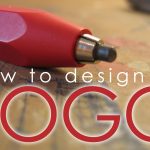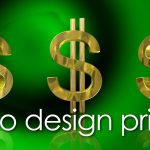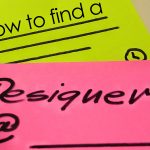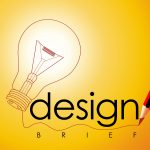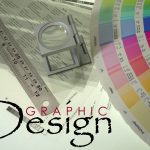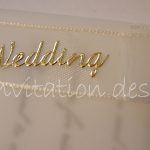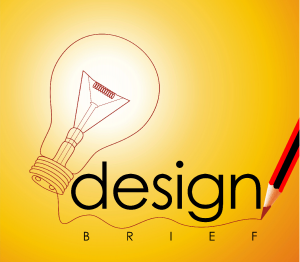 A good design brief can be the difference between a design that achieves the business objectives and a purely aesthetically pleasing design. The importance of a high-quality brief is often not fully appreciated. However, before we explore how to go about writing a good design brief, we need to understand what a design brief is.
A good design brief can be the difference between a design that achieves the business objectives and a purely aesthetically pleasing design. The importance of a high-quality brief is often not fully appreciated. However, before we explore how to go about writing a good design brief, we need to understand what a design brief is.
What is a design brief?
A design brief is essentially a written document that contains all the necessary information about a design project to help the creative team align with the goals of the design project. The client often provides the brief to the design team. However, it is not uncommon for designers to develop the design brief as the first step in the design process.
Why is a creative brief important?
The primary objective of the design or creative brief is to create a comprehensive and detailed guiding document that becomes the blueprint for the entire project. It is a good idea to make the design brief visually impactful with examples and references. A good brief can act as a point of reference for the client and the design team throughout the project.
Contrary to popular belief, creative briefs are don’t always have to be directly related to the actual graphic design. It should be focused on identifying the design problem, the desired outcome, goals and results expected (where applicable), and the business objectives of the design project. To tailor-make a design brief to suit the client, the designer needs to meet with the client to better understand the vision, nature of the business, objectives, target audience, business strategy and so on.
Key considerations a designer needs to be aware of
The creative process and product are extremely subjective and dependent on the sensitivities of the people involved. As such, every creative project is influenced by a number of factors.
![]() The people involved: The outcome of every project is impacted by the people involved in it at both the client and design firm’s end. It is important to identify the key stakeholders at the client company — the briefing and approving authorities, providers of creative inputs, and owners of business units that will be impacted by the design project. Defining the design team is equally important, preferably identified by name, title, role they will be playing on the project and their design portfolio, if possible.
The people involved: The outcome of every project is impacted by the people involved in it at both the client and design firm’s end. It is important to identify the key stakeholders at the client company — the briefing and approving authorities, providers of creative inputs, and owners of business units that will be impacted by the design project. Defining the design team is equally important, preferably identified by name, title, role they will be playing on the project and their design portfolio, if possible.
![]() The variables: Even the best project plan can be impacted by unknown variables – while sometimes they can work in favor of the project, they often can derail it, cause delays, avoidable iterations and frustrations for everyone involved. While it is impossible to eliminate all external factors, an effort to define as many of the known variables as possible can help minimize the risk.
The variables: Even the best project plan can be impacted by unknown variables – while sometimes they can work in favor of the project, they often can derail it, cause delays, avoidable iterations and frustrations for everyone involved. While it is impossible to eliminate all external factors, an effort to define as many of the known variables as possible can help minimize the risk.
![]() Communication check-points: A good project involves communication at many levels – between the client and the design team; among various stakeholders at the client company; among the creative team members, etc. From informal discussions to formal brainstorming sessions, phone calls to emails, communication can take many forms. Creating a communication framework and process can go a long way in eliminating miscommunication and misunderstandings.
Communication check-points: A good project involves communication at many levels – between the client and the design team; among various stakeholders at the client company; among the creative team members, etc. From informal discussions to formal brainstorming sessions, phone calls to emails, communication can take many forms. Creating a communication framework and process can go a long way in eliminating miscommunication and misunderstandings.
- What can be resolved over informal discussions and phone calls and what requires documentation?
- What examples can be used to define benchmarks and/or eliminate ambiguity?
- What requires open-ended questions and what needs specific, quantifiable inputs?
- Questionnaire design: How can it be made engaging instead of a chore?
- Documentation standards: For meeting minutes, chat logs, brainstorming sessions, etc.
- What should be the frequency for formal and informal check-in meetings?
![]() Bank of references: There’s no such thing as too many references. However, there can be conflicting references. There needs to be consistency in the reference kit that guides the designer. Developing and reviewing this bank of references and arriving at a consensus on it can reduce conflicts and confusions. In creating the bank of references, don’t just focus on benchmarks for good design, but also include examples of what is perceived to be bad or unacceptable design – and why.
Bank of references: There’s no such thing as too many references. However, there can be conflicting references. There needs to be consistency in the reference kit that guides the designer. Developing and reviewing this bank of references and arriving at a consensus on it can reduce conflicts and confusions. In creating the bank of references, don’t just focus on benchmarks for good design, but also include examples of what is perceived to be bad or unacceptable design – and why.
- Logos – Client business, product, competitor, and even unrelated
- Marketing collaterals – brochures, presentations, mailers and any other examples
- Digital assets – social media profile pages, website, blog post examples, mobile app, whitepapers, case studies, even examples of business letters. These go a long way in establishing personality and style.
10 essential elements of a design brief
![]() Table of contents: Including a table of contents can add structure and offer a seamless flow of information in the design brief. The client can easily refer to specific information in an organized manner, saving valuable time. The table of contents is usually added after the title page.
Table of contents: Including a table of contents can add structure and offer a seamless flow of information in the design brief. The client can easily refer to specific information in an organized manner, saving valuable time. The table of contents is usually added after the title page.
![]() Business profile: What does the business do, what is its history, what are the products or services it offers, what do the customers have to say about it and where is it headed? These are just some of the questions about the company profile that need to be answered in a clear and concise manner.
Business profile: What does the business do, what is its history, what are the products or services it offers, what do the customers have to say about it and where is it headed? These are just some of the questions about the company profile that need to be answered in a clear and concise manner.
![]() Objectives: Well defined goals of the company, project or campaign help create a good design brief. Goals of the company should be elaborated, whether they are to generate more sales, gather information or build interest. It is also important to ensure the goals are for the target audience and project your client’s unique selling proposition (USP) when compared to competitors.
Objectives: Well defined goals of the company, project or campaign help create a good design brief. Goals of the company should be elaborated, whether they are to generate more sales, gather information or build interest. It is also important to ensure the goals are for the target audience and project your client’s unique selling proposition (USP) when compared to competitors.
![]() Target audience personas: A detailed description, especially demographics (age, race, gender), of the target audience is necessary, along with the inclusion of primary and secondary audiences. The design brief should also elucidate whether the business is trying to appeal to a new market or targeting existing clientele. For example, two coffee shops sell the same product—coffee; however, their target audience can be different. One caters to a young, hip and fast-moving crowd who are attracted to bold, bright colors and brand offerings. The other can cater to a mellow and older crowd who would prefer earthy, rustic and calming environments.
Target audience personas: A detailed description, especially demographics (age, race, gender), of the target audience is necessary, along with the inclusion of primary and secondary audiences. The design brief should also elucidate whether the business is trying to appeal to a new market or targeting existing clientele. For example, two coffee shops sell the same product—coffee; however, their target audience can be different. One caters to a young, hip and fast-moving crowd who are attracted to bold, bright colors and brand offerings. The other can cater to a mellow and older crowd who would prefer earthy, rustic and calming environments.
![]() Budget and timelines: Any project works around a budget and time frame. The design brief should provide information on how the budget is used for estimates and costs. It provides a guideline for design, and it is also an excellent opportunity to understand whether the project can work within the provided monetary constraints and time framework.
Budget and timelines: Any project works around a budget and time frame. The design brief should provide information on how the budget is used for estimates and costs. It provides a guideline for design, and it is also an excellent opportunity to understand whether the project can work within the provided monetary constraints and time framework.
![]() Pictures and text requirement: The text and images used in the design are vital and as important as the design itself. It may be necessary to hire a graphic designer or a professional photographer to obtain a proficient design. Where possible, the design brief should contain images and information that are likely to be used or are suggestive of what should be used in the final design. The client stakeholders should approve these before starting work on the actual design. This helps avoid multiple changes during the design stage as well as results in an effective final product.
Pictures and text requirement: The text and images used in the design are vital and as important as the design itself. It may be necessary to hire a graphic designer or a professional photographer to obtain a proficient design. Where possible, the design brief should contain images and information that are likely to be used or are suggestive of what should be used in the final design. The client stakeholders should approve these before starting work on the actual design. This helps avoid multiple changes during the design stage as well as results in an effective final product.
![]() Specifications: These conditions include the size of the design and where it would be visible, whether it is on the website, business cards, stationary or any other type of document or file.
Specifications: These conditions include the size of the design and where it would be visible, whether it is on the website, business cards, stationary or any other type of document or file.
![]() Competition analysis: The brief should address the competition: who they are, what is their offering or USP and how your client’s company can tackle the competition for it to stand out and attract more customers and sales.
Competition analysis: The brief should address the competition: who they are, what is their offering or USP and how your client’s company can tackle the competition for it to stand out and attract more customers and sales.
![]() Image or result portrayed: The design brief should provide a clear idea of the end result or idea that the project is trying to achieve. For example, the tone– bright or earthy, or the effect – dominant or approachable. Colors should be different from the competition to ensure the design does not look similar to what is already out there. You may also want to know what fonts appeal to your clients and what they want to communicate: fun, playfulness or seriousness; whether photography needs to be professional or have a whimsical appeal. These points will help you configure the tone of the design.
Image or result portrayed: The design brief should provide a clear idea of the end result or idea that the project is trying to achieve. For example, the tone– bright or earthy, or the effect – dominant or approachable. Colors should be different from the competition to ensure the design does not look similar to what is already out there. You may also want to know what fonts appeal to your clients and what they want to communicate: fun, playfulness or seriousness; whether photography needs to be professional or have a whimsical appeal. These points will help you configure the tone of the design.
![]() List of people: Specific people are usually assigned to oversee the entire design or project. They may or may not be the final approval authority, however, so it is helpful also to know who can provide necessary information (marketing material) when needed and who is responsible for final approval to move things along quickly.
List of people: Specific people are usually assigned to oversee the entire design or project. They may or may not be the final approval authority, however, so it is helpful also to know who can provide necessary information (marketing material) when needed and who is responsible for final approval to move things along quickly.
These ten points are a useful reference while designing a brief, but the crucial point to remember is that a good design brief must contain all information essential to the project success. Merely possessing a visual appeal without the necessary information can be more detrimental than beneficial. As the guiding document for the project, a good design brief creates a strong foundation for a creative project, and it should be readily available as a reference throughout the project timeline.
The value of a good design brief
The quality of the design brief affects both the finished design and the project success because it is the document that the designer uses as the primary guide throughout the project. Once a project starts, make notes on your design briefs. Maintain your proposal and other necessary documents along with it and, when required, highlight the important points or make notes in the margins. It is also important to customize the design brief to suit the needs of each project. If the brief undergoes a significant change during the project, document the changes and keep an iteration history. While a design brief will vary from one client to another, the salient features needed to be included in a good design brief remain constant irrespective of the client or project. Effectively using a design brief during the design process can yield better results and outcomes.
CEO, Flying Cow Design
Attended University of Auckland
Lives in San Francisco Bay Area



